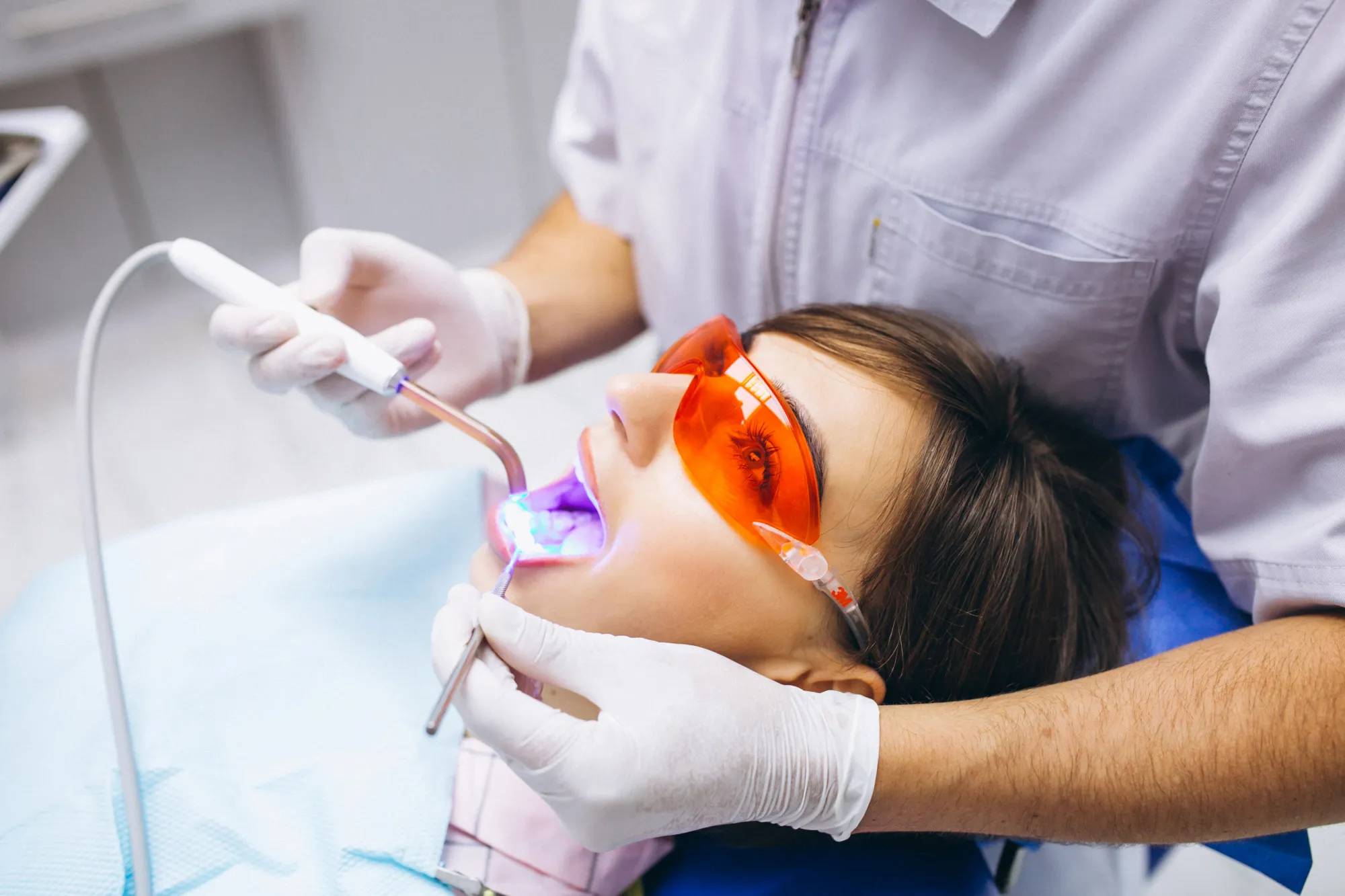The world of cosmetic dentistry has evolved tremendously over the past decade with technological advancements drastically changing how dental procedures are carried out. One of the latest innovations is the use of lasers in the removal of ceramic veneers – a procedure that was traditionally known to be difficult, time-consuming, and invasive. In an article recently published in The Journal of Prosthetic Dentistry, an extensive systematic review and meta-analysis spearheaded by Gassara Yosra Y and her team from the University of Monastir, brings to light the efficacy of laser-assisted debonding of ceramic veneers.
The study, titled “Laser-assisted debonding of ceramic veneers: A systematic review and meta-analysis” (DOI: 10.1016/j.prosdent.2023.12.001), delves deep into the realm of laser dentistry, analyzing an array of evidence from multiple sources to ascertain how effective laser debonding really is when compared to traditional methods.
The Importance of Ceramic Veneers in Dentistry
Ceramic veneers have become a cornerstone in cosmetic dentistry, offering patients an opportunity to achieve the perfect smile by correcting imperfections in their teeth, such as discoloration, chips, or irregular shape. However, the removal of these veneers, after they have served their purpose or need replacement, has always been a challenge for dental professionals.
Traditionally, veneer removal requires the use of dental drills and burs, which can lead to the chipping of the ceramic, damage to the underlying tooth structure, and discomfort for the patient. Thus, any method that can facilitate a less invasive and more efficient removal process is a welcome development in the field.
Laser Technology: The New Frontier in Veneer Removal
Lasers have been proposed as a groundbreaking tool for the debonding of ceramic veneers. This process relies on the usage of lasers to weaken the bonding resin used to fix the veneers onto the teeth, allowing for easier removal. The systematic review by Yosra Y et al. was conducted by scouring databases including Medline/PubMed, Cochrane, Scopus, and Web of Science, culminating in a meta-analysis to assess the efficacy of this approach.
This comprehensive research began with the identification of 1108 potential studies, of which 627 were screened by title and abstract. The qualitative analysis included 16 studies, and data from 3 of those studies were extracted for quantitative synthesis. The team performed the meta-analysis using the RevMan 5.4 software program, employing a random-effects model to evaluate standardized mean differences with 95% confidence intervals.
The analysis revealed that the use of erbium lasers greatly decreased the shear bond strength between ceramic veneer surfaces and tooth structures immediately after application. This finding is significant as it suggests that veneers can be removed more easily when a laser is used. Notably, with appropriate setting adjustments, this removal method didn’t only simplify the process but also minimized the chances of damaging the teeth.
The precise application of laser technology for veneer removal carries an array of benefits. It diminishes thermal damage to the pulp, reduces vibrations and discomfort, and it is significantly more targeted than mechanical methods—spelling less stress on both patient and practitioner.
Professional Insights and Quality Assessment
The quality assessment of the articles included in this review was conducted using the renowned Cochrane Collaboration tool, ensuring that the findings are grounded in rigorous scientific methodology. In their paper, Gassara Yosra Y and her team of researchers, including Ben Mariem Ameni A, Chebil Mohamed M, Kallala Rim R, Nouira Zohra Z, Saafi Jilani J, Harzallah Belhassen B, and Cherif Mounir M, presented a well-structured and insightful analysis that shines a light on the potential of laser technology to transform a cornerstone prosthodontic procedure.
The study’s significant heterogeneity among the included studies, indicated by the I^2 statistic, underscores the complexity and variety inherent in current research on veneer debonding methods. Nonetheless, the results hold promise for a revolution in dental treatment protocols, propelling the industry towards more patient-friendly approaches.
Laser-Assisted Debonding: The Road Ahead
The evidence provided by this meta-analysis points to an optimistic future where the integration of laser debonding could become standard practice in dental clinics worldwide. Further research is suggested to optimize laser settings and protocols, ensuring that dentists everywhere can harness this technology’s full potential while maintaining patient safety and improving outcomes.
For dental practitioners considering the adoption of laser technology for veneer removal, the meta-analysis provides a compelling argument backed by scientific evidence. It’s a leap forward that aligns with the ever-present goal in healthcare—enhancing the patient experience while delivering effective treatment.
Conclusion
The systematic review and meta-analysis conducted by the team from the University of Monastir offer a comprehensive overview of the current state of laser-assisted debonding of ceramic veneers and its advantages over conventional methods. The promising results not only advocate for a paradigm shift in dentistry but also set the stage for future advancements that could further ease the process of veneer removal.
As cosmetic dentistry continues to evolve, it is critical that research like this is considered and incorporated into everyday dental practice. The industry and its patients stand to benefit greatly from a move towards less invasive, more patient-centric solutions.
References
1. Gassara Yosra Y, Ben Mariem Ameni A, Chebil Mohamed M, et al. Laser-assisted debonding of ceramic veneers: A systematic review and meta-analysis. J Prosthet Dent. 2024;[journal article in press]. DOI: 10.1016/j.prosdent.2023.12.001.
2. Burke FJ. Lasers in dentistry: Part 1. Dent Update. October 2011;38(7):457-62. DOI: 10.12968/denu.2011.38.7.457.
3. Friedman MJ. Lasers in endodontics: An overview. J Calif Dent Assoc. 2005 Apr;33(4):323-30. PMID: 15899588.
4. Gutknecht N, Franzen R, Schippers M, Lampert F. Bactericidal effect of a Nd:YAG laser in the root canal: An in vitro experiment. Lasers Surg Med. 2004;35(2):96-105. DOI: 10.1002/lsm.20054.
5. Jyothi S, Smitha AS, Bhatnagar S. Use of erbium, chromium: yttrium-scandium-gallium-garnet laser in dental treatment: A review. J Lasers Med Sci. Winter 2018;9(1):1-6. DOI: 10.15171/jlms.2018.01.
Keywords
1. Laser Dentistry
2. Veneer Removal
3. Cosmetic Dentistry Innovations
4. Ceramic Veneers
5. Dental Technology Advances
